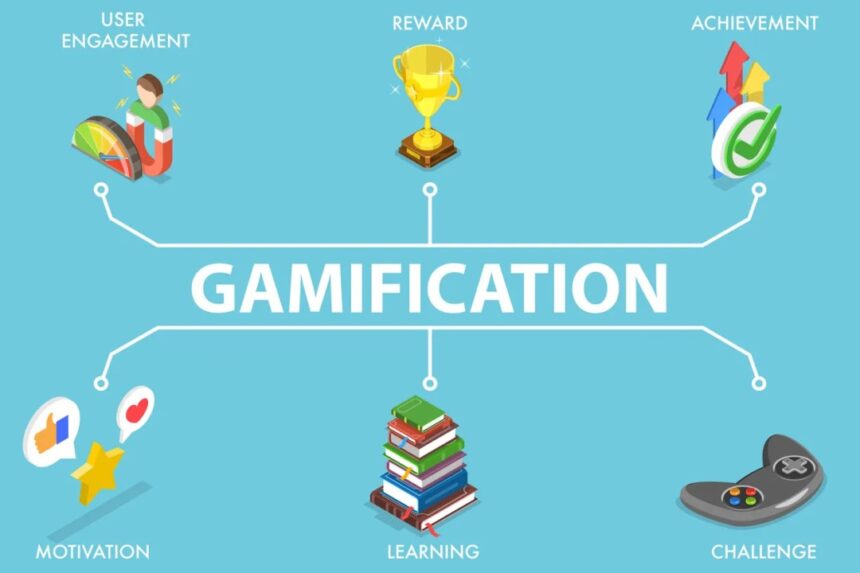The evolution of education has undergone a massive transformation with the integration of digital technologies. One of the most impactful innovations is the use of gamification in online learning. Gamification leverages game-like elements such as rewards, competition, and interactive storytelling to make education more enjoyable and effective. With the rise of e-learning platforms, educators and institutions are now harnessing learning games to enhance student engagement and retention.
Understanding Gamification in Online Learning
Gamification refers to the application of gaming principles to non-game environments, particularly education. It includes elements such as points, badges, leaderboards, challenges, and rewards to encourage learners to participate actively. By incorporating gamified elements into online courses, students feel more motivated and involved, reducing dropout rates and improving knowledge retention.
In the digital learning space, gamification transforms traditional learning methods into an interactive journey. Whether through quizzes, challenges, or interactive scenarios, learning games help learners develop problem-solving skills while keeping them entertained. The success of platforms like Duolingo and Kahoot! is a testament to the power of gamification in education.
The Benefits of Gamification in Online Education
1. Increased Engagement and Motivation
One of the primary benefits of gamification is that it enhances learner engagement. Traditional learning can often feel monotonous, but integrating gaming elements fosters excitement and enthusiasm. When students earn points or unlock achievements, they feel a sense of accomplishment that drives them to continue learning.
The competitive aspect of gamification, such as leaderboards, further motivates learners to perform better. They strive to improve their rankings, which results in more active participation and dedication to their studies.
2. Improved Knowledge Retention
Studies have shown that people retain information better when they are actively engaged in the learning process. Learning games make information more interactive and immersive, leading to better comprehension and memory retention.
By integrating storytelling and challenges, gamification helps learners relate to the content on a deeper level. This approach allows them to apply their knowledge in real-life scenarios, reinforcing the learning experience.
3. Encourages Self-Paced Learning
Unlike traditional classroom settings where students must keep up with a fixed pace, gamification allows learners to progress at their own speed. Many e-learning platforms use adaptive learning games that cater to different learning styles and abilities.
This personalized approach helps reduce pressure on students and enables them to master concepts before moving forward. It also allows educators to monitor progress and tailor lessons to suit individual needs.
Types of Learning Games in Online Education

1. Quiz-Based Games
Quiz-based games are a common form of gamification used in online education. Platforms like Quizizz and Kahoot! engage students through competitive quizzes that challenge their knowledge. These games incorporate timers, scoreboards, and instant feedback, making the learning process fun and interactive.
2. Simulation and Role-Playing Games
Simulation-based learning games allow students to experience real-world situations in a controlled environment. Medical students, for instance, use virtual simulations to practice surgical procedures. Similarly, business students engage in role-playing games where they make strategic decisions to understand market dynamics.
3. Puzzle and Strategy Games
Puzzle and strategy-based games help learners develop critical thinking and problem-solving skills. These games require students to analyze situations, plan their moves, and execute strategies to succeed. Games like Sudoku, chess, and logic puzzles are often used to sharpen analytical skills in an educational setting.
4. Adventure and Storytelling Games
Story-driven learning games immerse students in interactive narratives where they must make choices and solve challenges to progress. This format enhances creativity and decision-making abilities, as learners are actively involved in shaping their educational journey.
Implementing Gamification in Online Courses
1. Define Clear Learning Objectives
Before incorporating gamification, educators must set clear learning objectives. Every game element should align with the course’s educational goals to ensure students benefit from the experience.
2. Use Reward Systems Effectively
Rewards play a crucial role in gamification. Whether it’s points, badges, or virtual trophies, these incentives encourage learners to stay engaged. However, the reward system should be balanced to maintain fairness and avoid discouragement among participants.
3. Foster Healthy Competition
Healthy competition enhances motivation, but it should be implemented carefully to prevent excessive pressure. Leaderboards can be used to recognize top performers while also offering encouragement to those who need improvement.
4. Utilize Adaptive Learning
Adaptive learning games use AI-driven algorithms to personalize content based on a learner’s progress. This approach ensures that each student receives content tailored to their strengths and weaknesses, improving overall learning outcomes.
Challenges and Considerations in Gamification
While gamification offers numerous benefits, there are challenges to consider. Not all students respond positively to competition, and some may find it distracting. Additionally, designing effective learning games requires time and effort to ensure they align with educational standards.
Another key consideration is accessibility. Gamified content should be inclusive and accommodate diverse learning needs. Educators must ensure that online learning platforms are user-friendly and accessible to students with disabilities.
The Future of Gamification in Online Learning
As technology continues to evolve, gamification will play an even bigger role in education. Virtual reality (VR) and augmented reality (AR) are set to revolutionize learning games by creating more immersive and interactive experiences. AI-driven personalization will further enhance gamified education, making it more adaptive and responsive to individual learning needs.
Moreover, with the increasing adoption of e-learning in schools, universities, and corporate training programs, gamification will become a standard practice in education. It has the potential to make learning more engaging, inclusive, and effective for learners of all ages.
Conclusion
Gamification in online learning is reshaping the educational landscape by making learning more interactive and enjoyable. The use of learning games enhances motivation, engagement, and knowledge retention, providing students with an enriched learning experience. By leveraging game-based techniques, educators can create more dynamic and effective online courses that cater to diverse learning needs.
As educational institutions and e-learning platforms continue to innovate, the future of gamified learning looks promising. Whether through quizzes, simulations, or adventure-based storytelling, gamification is proving to be a game-changer in online education. The key to success lies in balancing fun with educational value, ensuring that students remain engaged while achieving their learning goals.
